Unknown - Clean Architectures in Python
Here you can read online Unknown - Clean Architectures in Python full text of the book (entire story) in english for free. Download pdf and epub, get meaning, cover and reviews about this ebook. year: 2020, genre: Computer. Description of the work, (preface) as well as reviews are available. Best literature library LitArk.com created for fans of good reading and offers a wide selection of genres:
Romance novel
Science fiction
Adventure
Detective
Science
History
Home and family
Prose
Art
Politics
Computer
Non-fiction
Religion
Business
Children
Humor
Choose a favorite category and find really read worthwhile books. Enjoy immersion in the world of imagination, feel the emotions of the characters or learn something new for yourself, make an fascinating discovery.

Clean Architectures in Python: summary, description and annotation
We offer to read an annotation, description, summary or preface (depends on what the author of the book "Clean Architectures in Python" wrote himself). If you haven't found the necessary information about the book — write in the comments, we will try to find it.
Unknown: author's other books
Who wrote Clean Architectures in Python? Find out the surname, the name of the author of the book and a list of all author's works by series.
Clean Architectures in Python — read online for free the complete book (whole text) full work
Below is the text of the book, divided by pages. System saving the place of the last page read, allows you to conveniently read the book "Clean Architectures in Python" online for free, without having to search again every time where you left off. Put a bookmark, and you can go to the page where you finished reading at any time.
Font size:
Interval:
Bookmark:
 Table of ContentsDedicationTo my father, who taught me to be attentive, curious, and passionate. He succeeded.To my mother, who taught me to be smart, cautious, and careful. She didnt succeed 1 Introduction Learn about the Force, Luke. Star Wars, 1977 This book is about a software design methodology. A methodology is a set of guidelines that help you to reach your goal effectively, thus saving time, implementing far-sighted solutions, and avoiding the need to reinvent the wheel time and again. As other professionals around the world face problems and try to solve them, some of them, having discovered a good way to solve a problem, decide to share their experience, usually in the form of a "best practices" post on a blog, or talk at a conference.
Table of ContentsDedicationTo my father, who taught me to be attentive, curious, and passionate. He succeeded.To my mother, who taught me to be smart, cautious, and careful. She didnt succeed 1 Introduction Learn about the Force, Luke. Star Wars, 1977 This book is about a software design methodology. A methodology is a set of guidelines that help you to reach your goal effectively, thus saving time, implementing far-sighted solutions, and avoiding the need to reinvent the wheel time and again. As other professionals around the world face problems and try to solve them, some of them, having discovered a good way to solve a problem, decide to share their experience, usually in the form of a "best practices" post on a blog, or talk at a conference.
We also speak of patterns_, which areformalised best practices, and _anti-patterns , when it comes to advice about what not to do and why it is better to avoid a certain solution. Often, when best practices encompass a wide scope, they are designated a methodology . The definition of a methodology is to convey a method, more than a specific solution to a problem. The very nature of methodologies means they are not connected to any specific case, in favour of a wider and more generic approach to the subject matter. This also means that applying methodologies without thinking shows that one didnt grasp the nature of a methodology, which is to help to find a solution and not to provide it. This is why the main advice I have to give is: be reasonable; try to understand why a methodology leads to a solution and adopt it if it fits your need.
Im saying this at the very beginning of this book because this is how Id like you to approach this work of mine. The clean architecture, for example, pushes abstraction to its limits. One of the main concepts is that you should isolate parts of your system as much as possible, so you can replace them without affecting the rest. This requires a lot of abstraction layers, which might affect the performances of the system, and which definitely require a greater initial development effort. You might consider these shortcomings unacceptable, or perhaps be forced to sacrifice cleanness in favour of execution speed, as you cannot afford to waste resources. In these cases, break the rules.
With methodologies you are always free to keep the parts you consider useful and discard the rest, and if you have understood the reason behind the methodology, you will also be aware of the reasons that support your decisions. My advice is to keep track of such reasons, either in design documents or simply in code comments, as a future reference for you or for any other programmer who might be surprised by a "wrong" solution and be tempted to fix it. I will try as much as possible to give reasons for the proposed solutions, so you can judge whether those reasons are valid in your case. In general lets say this book contains possible contributions to your job, its not an attempt to dictate THE best way to work. Spoiler alert: there is no such a thing. What is a software architecture? Every production system, be it a software package, a mechanical device, or a simple procedure, is made of components and connections between them.
The purpose of the connections is to use the output of some components as inputs of other components, in order to perform a certain action or set of actions. In a process, the architecture specifies which components are part of an implementation and how they are interconnected. A simple example is the process of writing a document. The process, in this case, is the conversion of a set of ideas and sentences into a written text, and it can have multiple implementations. A very simple one is when someone writes with a pen on a sheet of paper, but it might become more complex if we add someone who is writing what another person dictates, multiple proof readers who can send back the text with corrections, and a designer who curates the visual rendering of the text. In all these cases the process is the same, and the nature of inputs (ideas, sentences) and outputs (a document or a book) doesnt change.
The different architecture, however, can greatly affect the quality of the output, or the speed with which it is produced. An architecture can have multiple granularities, which are the "zoom level" we use to look at the components and their connections. The first level is the one that describes the whole process as a black box with inputs and outputs. At this level we are not even concerned with components, we dont know whats inside the system and how it works. We only know what it does. As you zoom in, you start discovering the details of the architecture, that is which components are in the aforementioned black box and how they are connected.
These components are in turn black boxes, and you dont want to know specifically how they work, but you want to know what their inputs and outputs are, where the inputs come from, and how the outputs are used by other components. This process is virtually unlimited, so there is never one single architecture that describes a complete system, but rather a set of architectures, each one covering the granularity we are interested in. Let me go over another simple example that has nothing to do with software. Lets consider a shop as a system and lets discuss its architecture. A shop, as a black box, is a place where people enter with money and exit with items (if they found what they were looking for). The input of the system are people and their money, and the outputs are the same people and items.
The shop itself needs to buy what it sells first, so another input is represented by the stock the shop buys from the wholesaler and another output by the money it pays for it. At this level the internal structure of the shop is unknown, we dont even know what it sells. We can however already devise a simple performance analysis, for example comparing the amount of money that goes out (to pay the wholesaler) and the amount of money that comes in (from the customers). If the former is higher than the latter the business is not profitable. Even in the case of a shop that has positive results we might want to increase its performances, and to do this chances are that we need to understand its internal structure and what we can change to increase its productivity. This may reveal, for example, that the shop has too many workers, who 3 are underemployed waiting for clients because we overestimated the size of the business.
Or it might show that the time taken to serve clients is too long and many clients walk away without buying anything. Or maybe there are not enough shelves to display goods and the staff carries stock around all day searching for display space so the shop is in chaos and clients cannot find what they need. At this level, however, workers are pure entities, and still we dont know much about the shop. To better understand the reasons behind a problem we might need to increase the zoom level and look at the workers for what they are, human beings, and start understanding what their needs are and how to help them to work better. This example can easily be translated into the software realm. Our shop is a processing unit in the cloud, for example, input and output being the money we pay and the amount of requests the system serves per second, which is probably connected with the income of the business.
The internal processes are revealed by a deeper analysis of the resources we allocate (storage, processors, memory), which breaks the abstraction of the "processing unit" and reveals details like the hardware architecture or the operating system. We might go deeper, discussing the framework or the library we used to implement a certain service, the programming language we used, or the specific hardware on which the whole system runs. Remember that an architecture tries to detail how a process is implemented at a certain granularity, given certain assumptions or requirements. The quality of an architecture can then be judged on the basis of parameters such as its cost, the quality of the outputs, its simplicity or "elegance", the amount of effort required to change it, and so on.
Next pageFont size:
Interval:
Bookmark:
Similar books «Clean Architectures in Python»
Look at similar books to Clean Architectures in Python. We have selected literature similar in name and meaning in the hope of providing readers with more options to find new, interesting, not yet read works.
Discussion, reviews of the book Clean Architectures in Python and just readers' own opinions. Leave your comments, write what you think about the work, its meaning or the main characters. Specify what exactly you liked and what you didn't like, and why you think so.







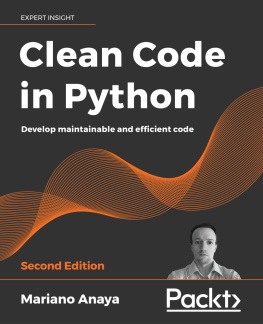
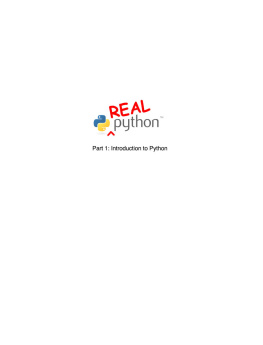
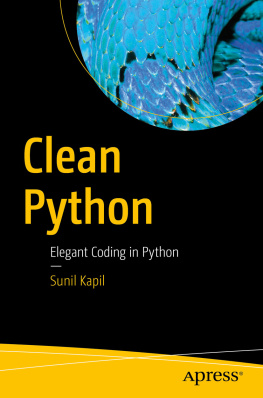
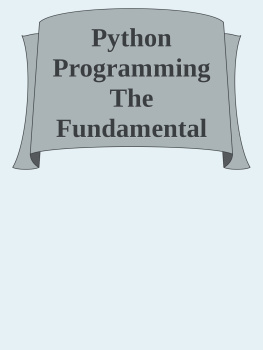

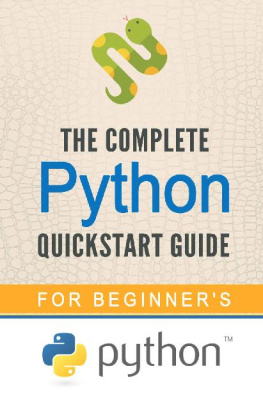
![Joannah Nanjekye [Joannah Nanjekye] - Python 2 and 3 Compatibility: With Six and Python-Future Libraries](/uploads/posts/book/124063/thumbs/joannah-nanjekye-joannah-nanjekye-python-2-and.jpg)